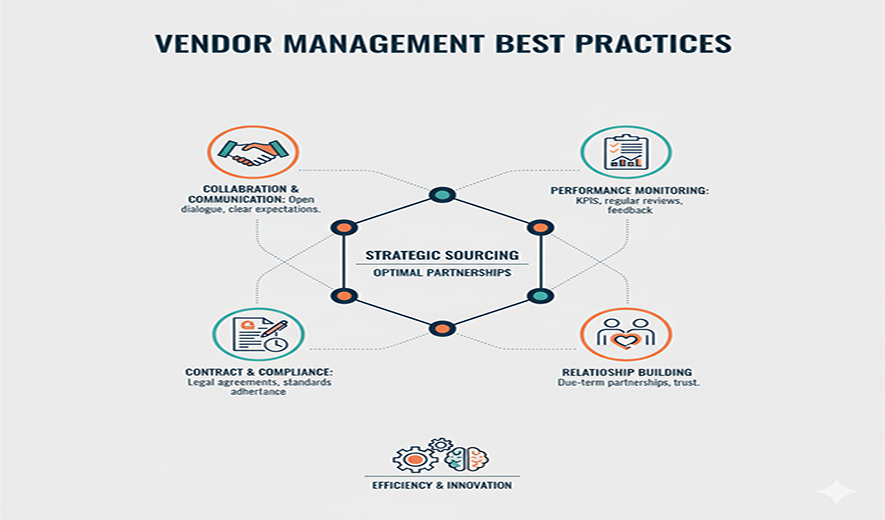
Vendor Management Best Practices
Vendor management is the strategic process of managing a company's relationship with its suppliers, from selection and contracting to ongoing performance evaluation. The ultimate goal is to maximize the value received from these vendors while minimizing risk and cost.
1. Implement a structured vendor selection process
A rigorous and standardized approach for selecting vendors is essential for building a strong supply chain.
- Define clear requirements: Before inviting proposals, establish specific criteria for what you need. This can include quality standards, capacity, lead times, technological capabilities, and cultural fit.
- Perform due diligence: Thoroughly vet potential vendors by checking their financial stability, reputation, and legal history. For critical partners, conduct site visits and contact references.
- Evaluate beyond price: Consider the total value proposition, including the vendor's long-term potential for partnership, not just the lowest cost. The cheapest option is not always the best value.
2. Negotiate robust contracts and service-level agreements (SLAs)
A clear and comprehensive contract is the foundation of a successful vendor relationship.
- Set measurable expectations: The contract should include specific, measurable performance metrics (KPIs) for factors like on-time delivery, quality, and responsiveness.
- Include clauses for risk: Detail remedies or penalties for non-compliance and establish clear procedures for resolving disputes. Safeguards like holding back payments until deliverables are accepted can mitigate risk.
- Define outcomes, not just features: Focus on the results you need rather than a long list of features. For example, specify increased customer retention as an outcome, not just a specific set of features.
3. Centralize and automate vendor information
Scattered spreadsheets and email chains are inefficient and risky.
- Use vendor management software: A dedicated system can centralize all vendor data, including contracts, performance history, and risk assessments. This provides a single, trusted source of information.
- Automate workflows: Automate routine tasks like onboarding approvals, document collection, and performance data gathering to reduce errors and save time.
- Provide self-service portals: Allow vendors to update their own information, track payment status, and access performance data through a secure portal.
4. Monitor and evaluate vendor performance continuously
You cannot manage what you do not measure. Regular evaluation drives improvement and accountability.
- Utilize a vendor scorecard: Create a standardized scorecard with KPIs and track performance over time. This makes it easier to compare performance across multiple vendors.
- Schedule regular business reviews: Hold quarterly or annual meetings with key vendors to discuss performance, strategic alignment, and future plans. This fosters a collaborative partnership.
- Gather internal feedback: Solicit feedback from internal teams who work directly with the vendors to get a qualitative perspective on their performance.
